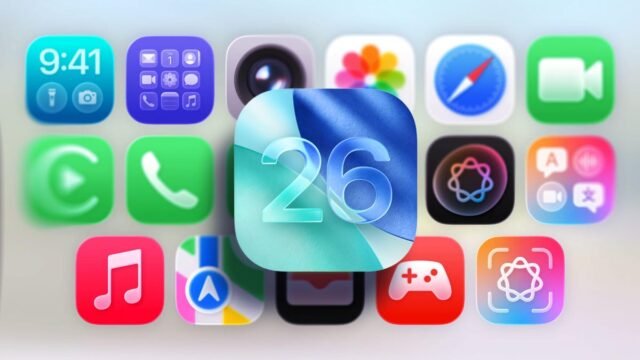Now that the iPhone 17, iPhone 17 Pro, and iPhone Air have been announced, iOS 26 is set to hit older iPhones soon. The latest version of the OS brings several new features to the iPhone, as well as Apple’s updated design language, Liquid Glass.
Liquid Glass adds a combination of transparency and shiny, glass-like accents throughout the user interface, giving the operating system a new look in more ways than one. And despite all the differences between it and what’s currently found on current iPhones, iOS 18, Liquid Glass isn’t nearly as dramatic as it might seem at first glance. That’s a good thing, because there’s no real learning curve, so anyone familiar with iOS will feel right at home.
Watch this: The new iPhone Air changes the game for pre-orders
If you want a glimpse at how Liquid Glass changes the look of your iPhone compared to iOS 18, I’ve highlighted some of the changes below. And if you’re looking to get one of the new iPhones, don’t miss out on the best iPhone 17 and iPhone Air pre-order deals.
Home screen
When looking at the home screens, the main difference you’ll find is that in iOS 26, the dock background and the search option that sits between the dock and home screen icons are more transparent and have a glow around the edges, whereas in iOS 18, they are slightly darker.
Other smaller changes include that the icons in iOS 26 look a little larger, and some app icons seem to have been more affected by the redesign than others, especially (from the screenshots) Settings, Camera, and Mail.
To really make the liquid glass shine on your home screen, you’ll want to choose the “All Clear” mode, which will make the most dramatic changes to your icons and widgets. Going this route could potentially introduce some visibility issues, but the “reduce transparency” setting does a pretty good job of fixing that.
Control center
Things haven’t changed much here. Outside of the new glassy look, the 1×2 and 2×1 controls in iOS 26 are more rounded than in iOS 18.
Lock screen
It’s easy to see the difference that liquid glass makes to the iPhone’s lock screen. The digital clock in iOS 26 dynamically changes based on the wallpaper and the number of notifications you have at any given time, which is pretty cool. The clock itself in iOS 18 can be changed, but it won’t change in response to the content displayed on the lock screen.
The notification background is clearly different between the two OS versions, with iOS 18 providing more opacity and black text compared to iOS 26’s almost transparent background over white text. The controls at the bottom of iOS 26 also feel more like physical buttons with depth and more visible backgrounds.
The new unlock effect in iOS 26 is that the motion of unlocking your iPhone will appear as if you are lifting a sheet of glass, highlighted by a shiny edge to give it shape as you start sliding your finger upwards.
Menus and dynamic tab bars
A new addition to iOS 26 is the introduction of dynamic tab bars in apps that will change depending on whether you’re scrolling or attempting to perform a specific action. Apple says this will create a more intuitive experience while freeing up space for your content. If the glass effect were replaced with heavily saturated colors, no one would blame you for confusing this new tab bar with what Google does in Android 16 in some of its apps — they look a lot alike. But compared to iOS 18, this new dynamic tab bar should not only reduce the amount of sifting through multiple menus, but also look pretty good in the process.
iOS 26 will dynamically adjust to light and dark backgrounds
While it’s harder to compare Liquid Glass to iOS 18 here, the upcoming feature is that buttons and menus will adjust based on the background color of the content. For example, when you’re scrolling through an app with a light background, floating menu options will appear with black text for easier viewing, and will automatically change to white when you scroll to a dark background.
iOS has had these kinds of features before, albeit in less dramatic ways, as you can tell from the screenshots above. When you compare them to what’s on the horizon, it’s hard not to be concerned about the little bits of liquid glass that’s in store.
These are just a few of our initial findings, and we’ll likely add more as we reveal them. If you want more on iOS 26, check out three upcoming features that are a bigger deal than liquid glass.
Watch this: The iPhone Air is a replacement card — and it’s the start of a big change for Apple















